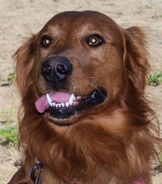
As choice becomes a greater priority, facilities likely will look for creative ways to enable resident autonomy while keeping residents safe. Some likely will go to the dogs.
Dementia care dogs are being used successfully by individuals in the community, but these service dogs have the potential to help groups of residents in dementia units.
“I train the dogs on a custom basis,” says Bob Taylor, dog trainer and president of DogWish in California (
www.dogwish.org). “So if the dog is to be used in a facility or dementia unit, the dog would be trained accordingly.” For example, a dog could be trained to block a doorway to prevent residents from wandering or alert staff if a resident tries to go somewhere he or she shouldn’t.
The dogs even can work as aides in some ways, Taylor says. “They can smell and feel people’s energy
and can detect people with problems—such as seizures or neurological disorders. They will run and alert an attendant, then come back to the resident and put their paw on him or her.”
The care dogs are highly focused on their jobs, and Taylor says, “When they are on the job, they are completely focused on the handler [for example, the resident]. They learn quickly and are dedicated to their tasks.”
Helping With Mobility Support
For residents with mobility problems or those at risk of falls, the dogs can be a godsend. As Taylor says,

“There are specialized harnesses that will fit the dogs to help people stand up, ambulate, and sit down. This would be a tremendous help for residents who have trouble getting up and down from the toilet, couch, or bed. The dog with this special harness can increase the person’s mobility.” The dogs even can
be trained to detect change in gait or balance and move under or in front of a person before he or she falls. They also are trained to move in tandem with the person so that they don’t get in the way as their handler is moving around.
“Our dogs learn to walk backwards, sideways, and stay right with you,” Taylor says. “This is very important. This is exactly what the elderly person needs to be able to move with safety and confidence.”